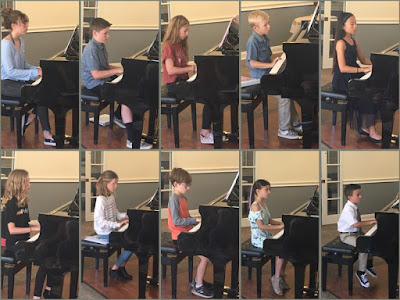Awhile back I wrote a blog post about my understanding of different cadences. You can see it, here. Later on, I came across an excellent resource book regarding Cadence definitions and music theory in general called, Edly's Music Theory for Practical People. I highly recommend this one. Here's a short blurb from the book to give you an idea of what I learned from Edly's book.
Cadences
What/When: Cadences occur at the end of a phrase, or the end of part of a phrase. A cadence consists of two or more chords that interrupt the harmonic momentum. The interruption can be temporary, in the form of arriving at a point of tension or arriving at a resolution. Analogies in language include phrases ending with a comma or question mark in the case of tension, or with a period in the case of resolution.
Why: The saying goes, "all good things must come to an end." This is equally true for music. If you can recognize the most common ways in which phrases end, you are that much farther ahead in understanding all musical phrasing.
Cadence Types & Definitions
The full cadence is V(7) -> I and again corresponds with moving from tension, and arriving at a resolution. In written language, this corresponds to a phrase ending in a period or exclamation point. Technically, a cadence is only "full" if the tonic is in both the melody and bass.
The half cadence is something -> V(7), that is, just about any chord moving to the dominant. In language, a half cadence corresponds to a phrase ending in a comma or question mark. A half cadence creates the expectation that something will indeed come next because of the unresolved nature of the dominant. The listener knows that the song or piece is not over at this point unless the composer or player is being cheeky, or deceptive. The chord preceding the dominant chord is often it's own dominant, or the V/V ("five of five," as it's called). In the same way that the dominant, creating the effect of a "temporary tonic." How temporary this ends up depending totally on the situation, and can be anywhere from a beat or two to a whole section of a piece.
The plagal cadence is IV -> I. You've heard it in the amens sung and played in church. IT shows up elsewhere, too, but usually to invoke that "churchy sound."
A deceptive cadence is simply any cadence that doesn't do what you expect it to. More specifically, a deceptive cadence is usually V(7) (since the dominant creates such a high level of expectation) to something other than I. The deceptive cadences found in classical, jazz, and pop music differ in destination chords, but the effect is similar in each case... one of foiled expectation. The mediant and submediant chords are the most standard tonic substitutes - the submediant (vim), in the case of classical music, and the mediant (iiim), in the case of jazz. (Notice that each of these two triads shares two of its three notes with the tonic triad! This might help you see how they might easily get away with replacing the tonic.
Most common deceptive cadences:
V(7) --> vim (classical and pop)
V(7) --> iiim (jazz and pop)
V(7) --> im (when key is major)
V(7) --> I (when key is minor)
V(7) --> bVI (various pop, classical, etc)
Learning about cadences is important. If you can recognize and identify cases, you will be able to recognize melodic and harmonic patterns much more easily and understand better how music is put together. Get the book, Edly's Music Theory for Practical People.
Blessings,
-- LadyD
"The beautiful thing about learning is that no one can take it away from you." B.B.King



























![Validate my Atom 1.0 feed [Valid Atom 1.0]](valid-atom.png)







